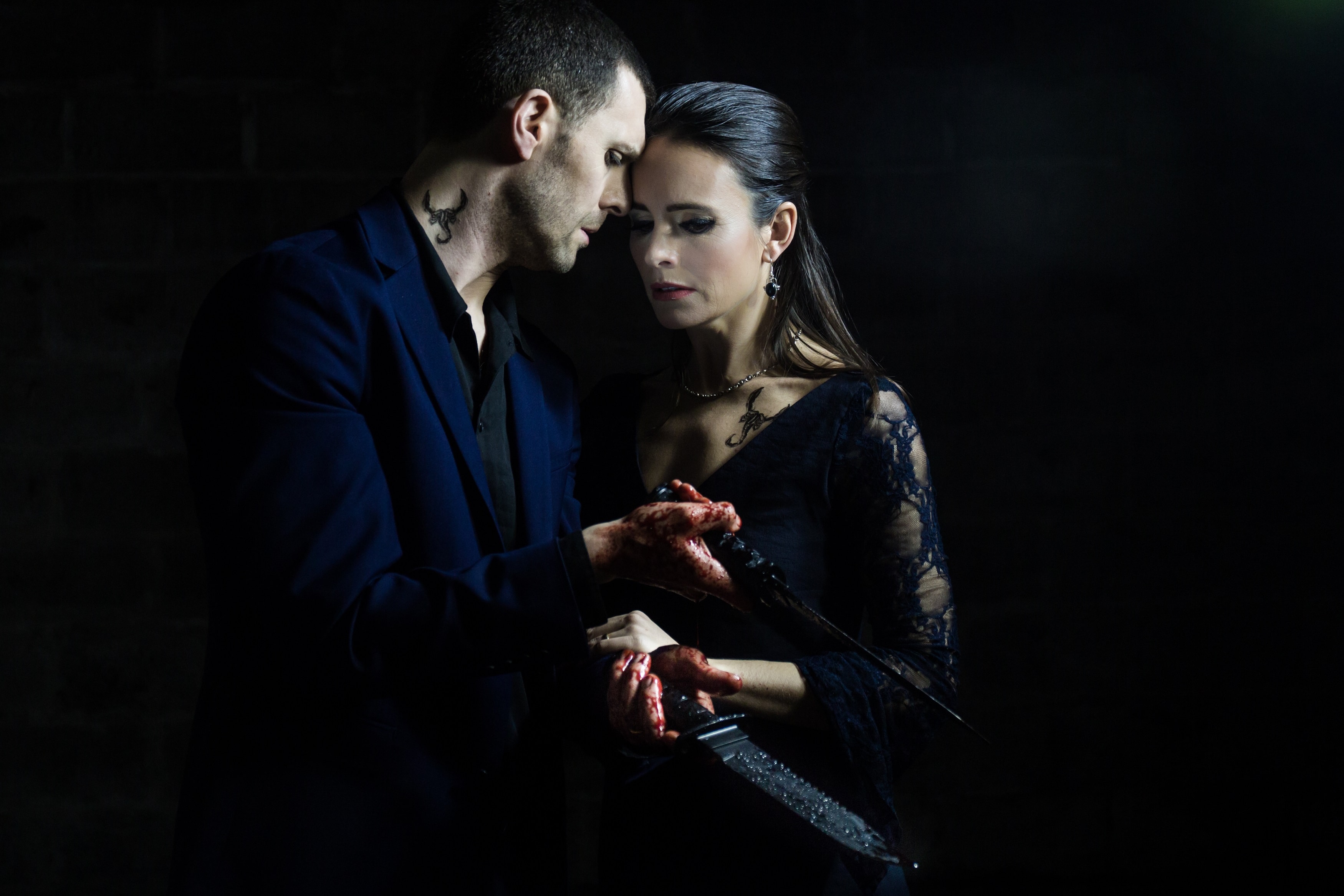Madness, pursuit of power, murder, self-destruction, love and blood are essential elements in every Shakespeare’s tragedy, and Mark Bruce’s dance theatre adaptation of Macbeth is no exception, managing to blend those aspects into a stunning sound and visual experience.
Setting and lights designed by Phil Eddolls and Guy Hoare, the creative team behind Dracula and The Odyssey productions, accompanies the cast of nine dancers through a journey of aberrations and downfall.
Three witches appear from the darkness of a desolated background, mainly lit by small lamps, but at times exposed to lightning and thunders, with only a townscape visible in the distance. Wearing a beautiful steel mask topped with long feathers, they develop enchanting patterns in unison, an enigmatic but sublime trio that soon turns into a macabre presence, part deranged and part manipulative. Pulling promises of success and heirs out of a shopping bag, they continuously hunt Macbeth with temptations, inducing him into a circuit of madness.

Lots of knives and blood punctuate the scene as fights recur frequently. In large groups or one against the other, dancers roll on the floor, attack, collide and scream, with a vehemence that brings in a bloodbath. It’s violent and abrupt, with hands and face coated in blood, but every gesture is sharp and perfectly controlled.
Despite that, Macbeth is not only about death and destruction, at least in the first act. The group deftly performs folk dance pieces during a banquet held by King Duncan – hopping, twisting, meeting and crossing in intricate shifts. The intriguing duets between Jonathan Goddard and Eleanor Duval (The Macbeths) trigger a potent mix of emotions; soft but trenchant gestures that reveal their thirst for power, and later, stern moves repeated obsessively several times.
Sublime music by Arvo Pärt alternates with more troubled tunes that impeccably depict the sequence of dramatic events. The score guides the action and hints at what is about to happen, some scenes are just left in total darkness, like the King Duncan’s murder, allowing the music to narrate the tragedy.
Probably one of the most effective images is Duncan’s funeral – his body, laid down on a sort of altar, is wrapped in fire and smoke before disappearing. The coronation follows, and from that point, the descent into madness and emptiness is quick and troubled.
I admire the ability in conveying the complexity of Macbeth without the use of words, only through dance, sounds and gestures. The Macbeths’ delirium is portrayed mainly through facial expressions and movements, like the act of scratching nervously their blood-stained hands. No soul is left in them, only demons that close the circle of atrocities in a spectacular final fight.

The dramatic ability of all dancers combined with intense and penetrating gaze, maintains the tension high, even though sometimes the performance is slow and the attention falls. Anticipated as “an intense and moving experience, disturbing, beautiful and tragic”, Mark Bruce Company surely managed to meet our expectations with a story that after four hundred years still keeps the audience in awe.
Reviewed at the Wilton’s Music Hall on 28 February
Read our interview with choreographer Mark Bruce






